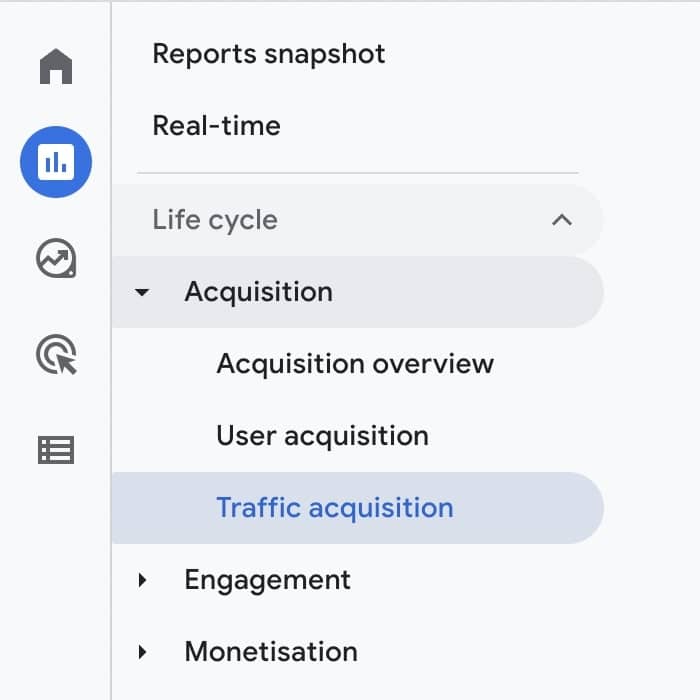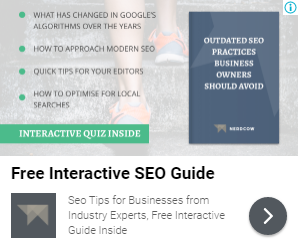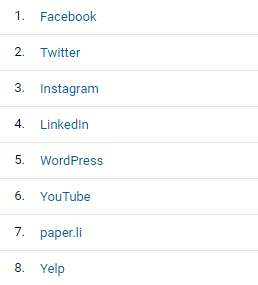Analyse web traffic and learn who uses your website
What if we told you that you can quickly learn about your audience from Google Analytics? All of the necessary data lies in Google’s tool - and you don’t need advanced reports to uncover it. Fear not, it’s not as hard as it seems. We’re aware that Google Analytics can be an unituitive tool. Sometimes it confuses us as well! But we truly believe it’s not reserved for web analysts. Everyone can benefit from it, and we’ll show you how to learn more about your visitors by looking at website traffic sources. Written by Dawid ZimnyWebsite Audience Analysis In Google Analytics
Before we dive into the details, let’s figure out how you can find traffic sources on a website. Accurate tracking of website traffic sources is possible with a variety of analytics tools. We’ll focus on Google Analytics here, as it’s the most popular. The process will be similar for other providers, such as the privacy-focused Matomo.
We’ll tell you how to estimate traffic source values without analytics. It won’t be the most accurate and some tools required are paid, but it’s an option for those that just don’t have access to the raw data.
Where are website traffic sources in Google Analytics 4 (GA4)
Go to Reports first.
By default, there is data about the traffic sources on the home page of Reports, but we recommend going a little deeper.
In the Life cycle tab, there’s an Acquisition category. We recommend using the Traffic acquisition:

List of website traffic sources in GA 4
The default traffic channel grouping in Google Analytics 4 is as follows:
- Affiliates
- Audio
- Cross-network
- Direct
- Display
- Mobile Push Notification
- Organic Search
- Organich Shopping
- Organic Social
- Organic Video
- Paid Other
- Paid Search
- Paid Shopping
- Paid Social
- Paid Video
- Referral
- SMS
Learn more about your website’s target audience
Organic Search

With the introduction of SSL encryption and privacy policy changes of Google, the complexity of organic traffic has changed. What used to be a great metric to discover which keywords visitors used to find your website is now a little less valuable.
Most of the organic visits don’t report the keyword anymore, but there’s still a lot we know about organic traffic. First of all, these are people that know what they’re searching for. Every traffic type includes “spam traffic”, but it’s safe to assume that your business website is ranking for the visitor’s query on purpose.
When done right, organic traffic gives you longevity and is very cost-effective. However, it’s a hit or miss. The oversaturation in the digital space means that it might be incredibly hard to compete in your niche.
Who are they?People that know what they want. They’ve used a very specific search query to find you and expect to find a relevant solution. Usually, they won’t know your brand, unless they searched for it directly.
Paid Search
This is where you’ll find the visitors from your PPC campaigns, regardless of the advertiser. Paid traffic channel relies on third-party solutions, so make sure you’re using applicable tracking scripts for your campaigns.
It varies by the campaign type but Google PPC specifically has as many similarities to organic traffic as it has differences.
What’s different is that you pay to show up at the top of Google for a limited amount of people. You can use audiences filtered by geolocation or interests to ensure a higher quality of traffic. Many paid campaigns use landing pages instead of the core pages of a website, which are highly optimised for conversions.
However, most organic search factors still matter for paid search. User experience plays a critical role in both your conversion rates, but also for how high you show up. The automated system grades your ads based on their content and the quality of the target page. Factors like content quality and relevance, as well as page speed, are just as important as for organic search.
Who are they?A group of people who searched with the intent matching your ads, whether it’s purchase intent or a branded keyword. They’ve used an ad rather than browsing the options in search results, which may indicate they’re impatient.
You might be losing money on digital ads
Many businesses advertise on Google and social media. But what if you’re doing it at a loss, without raising brand awareness to justify the spend?
Calculate the profitability of your adsDisplay traffic
Contrary to the overlooked similarities of paid and organic search, display advertising is usually put in the same bag as paid search. That’s further from the truth than you can imagine.
Once again it heavily depends on your campaign set up but for one of the most popular ones, remarketing campaigns, display advertising is more like giving your potential customers a nudge rather than appearing when they’re looking for your services.

You can showcase your ads in a wide range of locations like Gmail, YouTube, other websites or even mobile apps. While the ultimate goal is to convert a potential client, the means to achieve it are quite different from regular paid search.
Who are they?Depending on the type of campaign these might be brand-new visitors from a variety of sources or ones that have already visited your website. In most cases, they weren’t looking for your services at the time when the ad appeared.
You’ve captured their attention in the midst of other activities, which is slightly similar to targeted visits from paid search… or they accidentally tapped on a frustrating ad in a mobile app because you haven’t blocked these.
Direct traffic
The name seems straightforward at first but as a recurring theme of this article, many of the aspects of direct traffic are overlooked. Typing in www.nerdcow.co.uk in your browser will be the most of our direct traffic, that’s correct.
But this also includes bookmarks and false positives. The former indicates a very loyal audience, while the latter is much different, as it includes misplaced traffic from other sources. These other sources include errors (both manual and technical) in referring mechanisms, as well as some apps like instant messengers, which might not report the source correctly. Sharing a link in these might count as a direct visit.
Who are they?Direct traffic is word-of-mouth marketing for your website. While the false positives exist, most of these visits should be legitimate, bringing in people that know your brand and possibly used your services in the past.
How many people come directly to your website?
The average “norm” circling the Internet is 10-20%. Where does your website stand? Share the percentage of your direct traffic in the comments and I’ll let you know if you have anything to worry about.
Organic Social
For a change, social traffic has fewer quirks than the aforementioned traffic types. However, there is still one aspect that perhaps everyone knows but just doesn’t think about it.
Social media traffic includes much more than Facebook, Twitter, LinkedIn, or other platforms that you use daily. YouTube, Yelp, Pinterest, some WordPress pages or even company review/job search services like Glassdoor could fall under this category.

Social visitors might already know your brand or just found it by scrolling through their timelines. Due to the fact a couple of surprising sources can be found here it’s important you check where your social visits come from.
It’s also crucial to track each individual link you post on your social media. This will help you segment your audience and optimise your content. While you can’t control people just posting a link to your website, you can add UTM attributes to every link you post on your social media to know exactly how they found you.
Was it the link in your Twitter bio or the blog post from Monday? Perhaps you’ve posted the same article for the second time this year – have they found you using the old post, or the new one?
There’s a lot of variables here, perhaps the most out of any traffic source, but the good thing is that you can control a lot of it.
Paid Social
Who are they?Similar to Paid Search with a subtle difference. People visiting from paid social are usually colder leads – but this will depend on the type of campaign and social network. Clicks on ads in Google involve people actively looking for information that your ad covers. On social media, this isn’t the case nearly as often.
Email traffic
Who are they?A diverse group whose characteristics depend on the type of email interaction. We recommend using UTM tags in your emails to know exactly what they clicked. This will help you narrow down who these people are.
Referral traffic
Referrals are the word-of-mouth of digital marketing. This traffic simply means that there’s someone out there who mentioned you and linked to your website – and it’s generating traffic for you, great!
Not only because you’re getting “free” visits, but also because you get backlinks, which are still very important for the SEO.
Who are they?This audience can be even more diverse than social traffic, depending on the number of mentions your website gets on other sites.
Is it a small personal blog or a national news outlet that mentioned you? Without answering this question and knowing the contest you can’t tell who they are. But once you find it out, you’ll get invaluable insight into your referral traffic.
Affiliate traffic
Who are they?Similar to referral, but likely including monetisation between you and the referring site. The audience definition will depend on the type of collaboration between you and the affiliate.
Organic/Paid Shopping
Who are they?These are the people browsing your product or brand accounts on a shopping site. They might look to verify your business and build trust before purchasing. Paid visitors are likely to be further down the customer journey.
Organic/Paid Video
Who are they?Visits from video platforms. These users are familiar with your content and are likely to know about your brand. Compared to the Shopping traffic, they might not know about your products or services.
Mobile Push Notifications traffic
Who are they?A very specific source in GA4 which will require further tracking to narrow down the audience. On its own, these people are already users, rather than prospects – but other details will depend on the type of notification.
Audio traffic
Who are they?Visitors from podcasting platforms are another type of referral source with distinct characteristics depending on the topic of the podcast. As a rule of thumb with podcasts, you can expect people to know a bit more about your business compared to referrals and affiliates.
SMS traffic
Who are they?Unlike Push Notifications, these people aren’t guaranteed to be users. Once again, the specific characteristics depend on the campaign that made them click on the link.
Paid Other
A catch-all for unattributed paid traffic.
Unassigned traffic
A big unknown. Visits that don’t match any other criteria set by Analytics land here.
How to learn about your website audience without Analytics
As mentioned, the tips included here will not be accurate. You can get estimates using a variety of tools, but these numbers are not very reliable.
Your first option here is using SEO tools. The likes of ahrefs (paid) or Ubersuggest (free/premium) will estimate your organic and paid traffic. You’ll be missing out on other sources which is an obvious flaw for this use case, but if you can’t get accurate data, it’s better than nothing.
Using similarweb is the other option. It won’t be viable for most businesses, as it doesn’t display data for websites with under 50,000 monthly traffic. If you can’t get access to your analytics data, you can use similarweb to get estimates. Again, they’re not very accurate – for example, here are their results for one of our clients:

In reality, only 54.3% of their traffic is direct – not 81.41%. 40.8% is classified as organic (search) traffic compared to the 12.32% estimate of similarweb.
Traffic sources help you understand your audience
Every specific traffic type, even at a high level, gives you insights into your audience. As you dig deeper, you learn more and more about your visitors.
This is invaluable for your marketing team, editors and web agency. You can optimise your advertising, SEO strategy, user journey, email campaigns, social media profiles and even traditional marketing campaigns.
As we’ve mentioned, the tools to draw these conclusions are more accessible than they seem at first, so hopefully, this little guide helps you uncover new things about your audience. If you’ve learned anything new, let me know. It helps us when working on new pieces of content.
Originally published Oct 04, 2019 10:24:25 AM, updated May 8 2024.




Join the conversation
Looking to share your feedback and join in on the conversation?